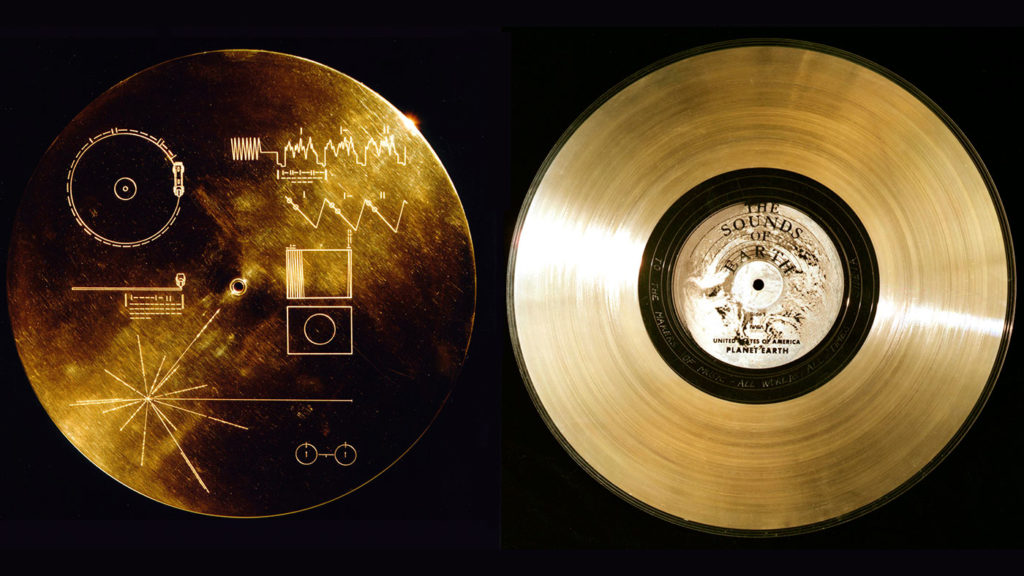Gold Element Facts & Artifacts
Gold Element Atomic Number and Name
If the gold element is the best of all elements, then why is it number 79? And why the symbol Au for the chemical element gold??


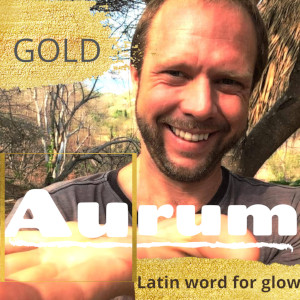
Gold is element 79, and we call that number the atomic number. It’s like a serial number, starting at 1, the simplest element. As the atomic number increases, the atoms have more parts and thus become more complex. There are about 92 elements that occur here on Earth (outside laboratories). So, the gold element, at number 79 out of 92, is one of the bigger, more complex types of atoms commonly found. Note that the 92 elements are 92 different types of atoms that make up the stuff we find around us. There are elements with higher atomic numbers than gold, yet most of them are not that common here on Earth.
The chemical symbol for gold on the periodic table of chemistry is Au. This strange abbreviation comes from Latin, as we currently believe people knew about gold since 3000 B.C. or so. The symbol Au comes from their old word aurum, which means glowing, kinda like a halo or aura. Interestingly, the opposite of the word aura in the modern English language is usually taken as a void, blankness, or nothingness. It does seem to reason that gold is certainly the opposite of these things (or nothings), because, of course, gold is shiny and lustrous. (Lustrous is a bigger, more complex science term for shiny). If you don’t agree, I would be happy to trade you a handful of nothingness for a handful of your gold.
Rare Pre Hispanic Gold Artifacts
Photos taken with permission from the Museo del Oro (English translation: Museum of Gold) in Bogota, Colombia.
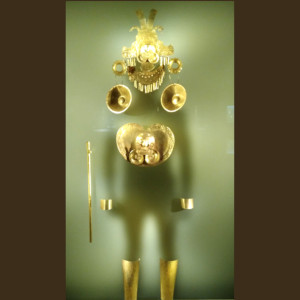
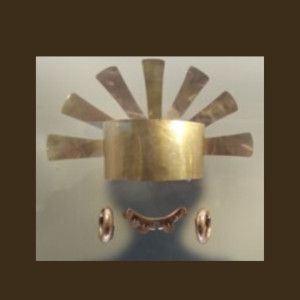
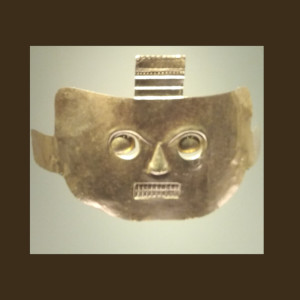
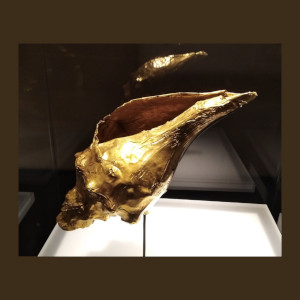
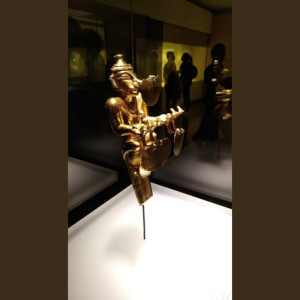


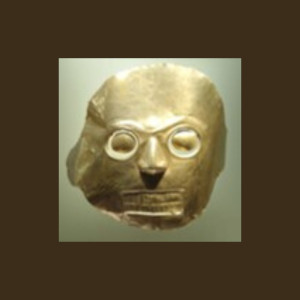
The Museum of Gold (Museo del Oro, in Spanish) is in Bogota, Colombia up at 8,700 feet (2,650 meters) elevation above sea level. It’s been extremely popular since it opened in 1968. It holds rare artifacts from Pre Hispanic life on the American continents. Gold was actually rather common in Pre Hispanic Colombian peoples, who lived in what we today call the Andes Mountains. The Muisca, Tairona, San Agustín, Tolima, Zenú, Nariño, Quimbaya and Tierradentro tribes in particular were known for their gold smithing abilities. Indigenous peoples commonly wore gold daily, leading to the birth of the legend of El Dorado when the Spanish invaders (conquistadores) arrived in about year 1502… a magical place where gold was more abundant than water.
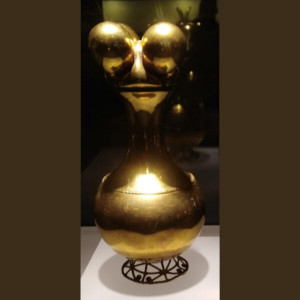
This gold Poporo is a sacred device for indigenous cultures. The one shown here is from the Quimbaya culture. It is associated with mystical powers and high social status. It is a container, made of gold. It is used to store lime. They used the lime in rituals. Lime, chemically, is calcium oxide. Probably they intensified the alkalinity of the lime by producing “burnt lime” through burning lime-rich minerals in a kiln. Lime was historically an important chemical, used for food preparation (sugar, corn and chocolate), cement making, and water treatment. It is a chemical of major industrial importance today, for these same reasons plus many others.
Legend of El Dorado
“Dorado” is an everyday word in the Spanish language dictionary that literally translates to: covered in gold. In the 1500’s, as the Spanish conquistadores invaded South America, a new chief rose to power. He was king of the Muisca tribe in the area of Lake Guatavita in Colombia. The legend goes that this new chief threw gold and gems into the water as an act of appeasement. And that he was covered in gold dust. When the new and old worlds made contact, the Spaniards began to call this chief El Dorado. It means “the one covered in gold.” Perhaps fueled by greed, the Spaniards believed with certainty that El Dorado, the one covered in gold, was really an entire golden city, not just a chief. The Spaniards searched, but only found some gold coins in the shallow waters of Lake Guatavita. The search thus continued, for a very long time. And the legends continue as well, as it seems that every country on the American continent has its own, true version.

Gold Element in the Modern World
Gold is a highly conductive metal. And it doesn’t react very much. This makes gold ideal for using in modern electronics, as it won’t corrode and lose conductivity. We use just a little bit, though, as it’s obviously expensive. Interestingly, the only metal less reactive than gold is platinum… and platinum generally costs about 25% more than gold. Apparently gold is no longer the most valuable element.
The below photo is a solid gold circuit made by Dr Scott at the University of California Berkeley (Cal) Marvell NanoFab Lab. The picture was taken under a microscope. The gold circuit is a tiny, electronic thermometer. It was used in an experiment to figure out how to prevent computer chips from overheating. You can see where wires have been soldered onto the tiny gold square contact pads measuring only one quarter of a millimeter on each side. The gold lines are just 20 micrometers (20 millionths of a meter) wide at 70 nanometers (70 billionths of a meter) deep.
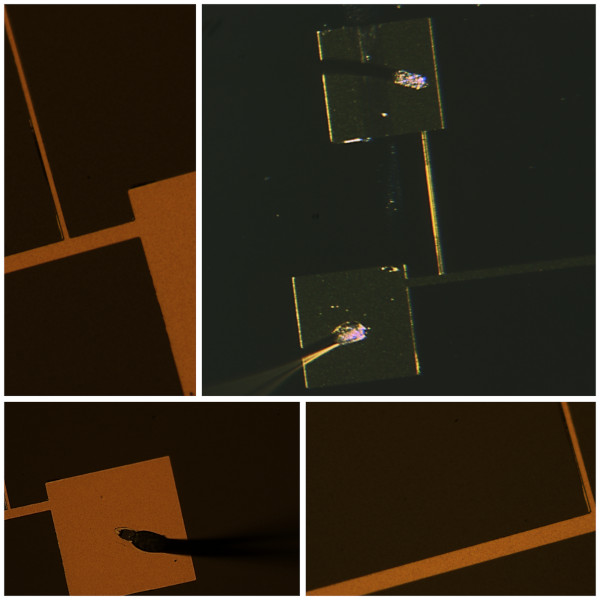
Voyager Golden Record
The Voyager Golden Records were sent out… to deep space… in both Voyager spacecrafts launched by NASA in 1977. The gold-plated, copper-core records have recorded sounds from Earth. Plus there is a star map of our planet’s location engraved on the back side. The idea was to give any extraterrestrial lifeforms an idea of what happens on Earth.
But why gold? It’s because gold in inert, or unreactive. The gold record can last for very, very long in space… and it’s still out there hoping to be found!
